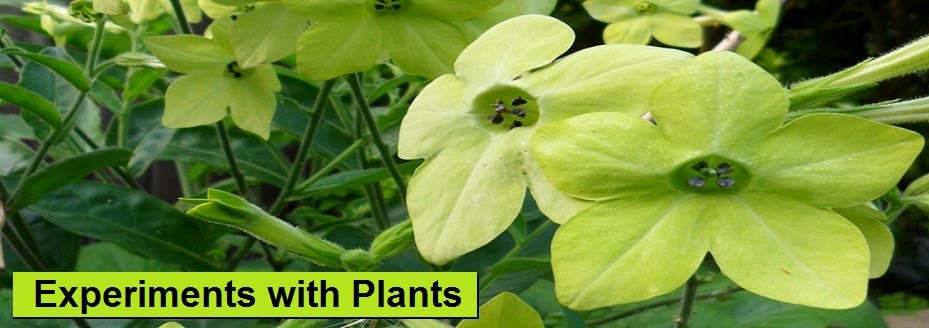There are a few plants in my garden which I would describe as sinister. Houttuynia Cordata Chameleon is one of them. I didn't realise this until I saw what I thought was one of my weeds in another blogger's post. Alarm bells started ringing. Until that day, when I discovered its name and started researching it, I wouldn't have believed that it was a desirable garden or pond plant, which can be bought in nurseries or ordered on-line, cheap as chips.
![]() If you asked me to define a sinister plant, I wouldn't be able to tell you, it's just a gut feeling, like when you're walking down a street on a dark night and you spy a person in the distance who prompts you to cross over to the other side for no explicable reason. Invasiveness is probably a key factor with sinister plants, but wisteria is invasive and I don't find it sinister, I admire the way it challenges me in fact. Maybe it's underground invasiveness that I have a problem with because you can't see what it's up to. Slugs avoiding certain plants also stirs suspicion, but I found at least one specimen of houttuynia that's been chewed by something, which is slightly comforting.
If you asked me to define a sinister plant, I wouldn't be able to tell you, it's just a gut feeling, like when you're walking down a street on a dark night and you spy a person in the distance who prompts you to cross over to the other side for no explicable reason. Invasiveness is probably a key factor with sinister plants, but wisteria is invasive and I don't find it sinister, I admire the way it challenges me in fact. Maybe it's underground invasiveness that I have a problem with because you can't see what it's up to. Slugs avoiding certain plants also stirs suspicion, but I found at least one specimen of houttuynia that's been chewed by something, which is slightly comforting.
If you snap a leaf apart, a zest of coriander scent hits your nose. I don't recommend eating it, but the species form of this ornamental hybrid is eaten in Vietnam as salad leaves, where its name translates to fishy mint; its roots are stir-fried like bean sprouts. It's also used in Chinese medicine, even reported to have helped cure the SARS epidemic. On the other hand, it's listed in the global invasive plants database and I've found several comments on the web from gardeners saying this plant should be sold with a warning, including a husband accusing his wife of creating an ecological disaster in their garden by planting it.
I can understand why people might be tempted to buy my chameleon variant as an attractive, ground-cover plant. The red pigment in the leaves is brought out by sunshine on more exposed parts of the plant, whereas leaves protected by the bordering wall or other plants are just green and yellow like ivy.
![]() |
| houttuynia in the sun |
![]() |
| houttuynia in the shade |
So far I have just been pulling them out when they get in my way, not digging too far down and disturbing the roots; I assumed that was why they kept returning. For the purpose of this post, I pulled out the tallest stem to see if I could photograph the network of roots underneath. This wasn't so easy to do without washing off the soil, but here are the different thicknesses of root I found on digging deeper and deeper. Then I read that, according to Paghat, just a small fragment of the thick root can be used to propogate this plant; by breaking it off, I have probably inadvertently induced it to have a reproductive spurt!
![]() |
| tallest houttuynia |
![]() |
| houttuynia roots |
Apart from this photo of a matted network of houttuynia roots, I can't find any evidence on the web which shows exactly how invasive this plant is. It's supposed to thrive in damp soil, especially at the edges of ponds or even submerged in water, though it can adapt to living in drought conditions too (rather sinister don't you think?). In my garden, I noticed it in a flower bed a year ago, in half a flower bed to be more accurate, which I only water at the bases of annuals when they start wilting in the height of summer. There aren't any annuals except for self-seeded marigolds in my garden at the moment, so it's a good time to show the aforementioned flower bed to you - here are two views up and down the bed.
![]()
![]()
At first you may not detect the houttuynia, but once your eyes get accustomed to the leaves, you see them pop up here and there. It certainly has a presence, but I wouldn't say that it has invaded completely yet. Only time will tell if the plant remains contained in this portion of the flower bed becoming more dense, or if it travels up the bed eventually covering the other half too. My gut feeling is that if I don't over-water this area, it will just fill in the spaces between the other plants. What's going on underground is another matter; sometimes it's best not to probe too much.
![]() |
accompanying a baby rose |
![]() |
accompanying a bulb |
![]() |
accompanying a baby lupin |
![]() |
accompanying a marigold |
![]() |
accompanying a hebe |
![]() |
houttuynia doing their own thing |
The jury is out on the scent of houttuynia, reports vary from coriander to tangerines to raw fish :
http://www.uni-graz.at/~katzer/engl/Hout_cor.html
http://www.pfaf.org/user/plant.aspx?latinname=Houttuynia+cordata
Species houttuynia roots stir-fried like bean sprouts in China :
http://www.geolocation.ws/v/W/4cc0e32c1d41c8067f0112f8/roots-of-the-plant-houttuynia-cordata/en
This blogger eats the leaves of the species form of houttuynia before it bites back :http://nashvilleveggiegarden.blogspot.com/2008/07/my-favorite-herb-houttuynia-cordata.html
How to save your garden from houttuynia attack :
http://www.pittsburghlive.com/x/pittsburghtrib/lifestyles/homegarden/s_745325.html
Houttuynia is included in the global invasive species database :


